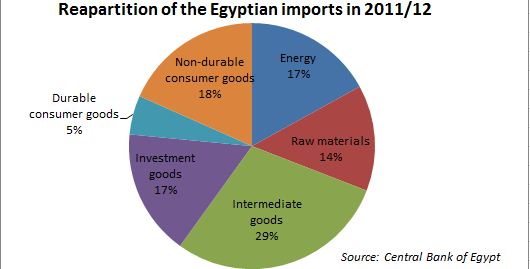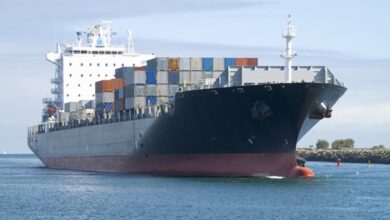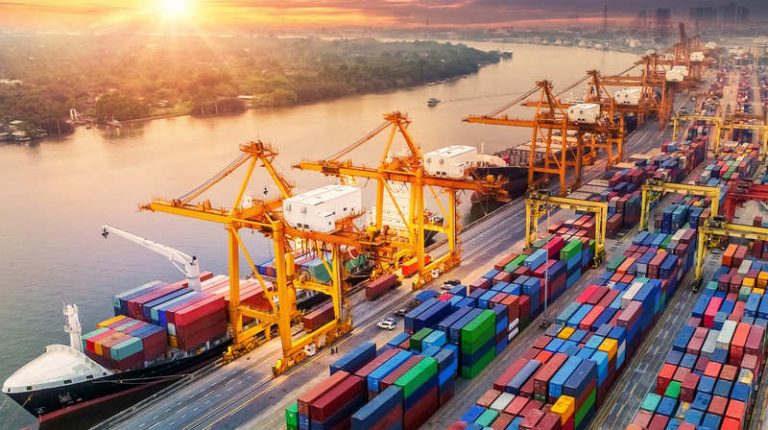
It’s no secret that Egypt’s current government is having trouble financing its spending. But the government’s troubles reflect a greater problem that encompasses the entire economy.
In the past two years, the country’s balance of payments, a record of all the monetary transactions between Egypt and other economies around the world, has taken a harsh turn toward the negative.
According to the recently released Central Bank of Egypt provisional financial and trade data from the 2011/2012 year, the deficit of the balance of payments has reached an US$11 billion peak.
A large portion of the balance of payments problem is due to a mounting trade deficit of $31 billion, a 17 percent increase over last year.
Experts say the problem is not new, that Egypt’s longstanding and deeply-rooted economic problems have merely been laid bare by the country’s post-uprising crisis.
The deficit is structural, like in most developing countries, according to Amr Adly, an economist at the Egyptian Initiative for Human Rights.
“The revolution just made the structural problems sharper,” he said. “Capital inflows and service exports used to compensate for the trade deficit. This is not the case anymore after the global crisis and the revolution.”
The service balance (a record of services exchanged between Egypt and the rest of the world) was cut in three between 2007 and 2012. The capital and financial accounts, which show how much money is flowing into a country, dropped from a $7.5 billion surplus to a $1.4 billion deficit in the same period.
Stagnating rents
Petroleum exports, Suez Canal revenues, foreign direct investment (FDI) and tourism are the major moneymakers, or rents, for the Egyptian economy. The sum of these used to make up for Egypt’s lack of trade with foreign countries. But in the current climate, this is no longer the case.
A significant rise in emigrants’ transfers, or remittances, which rose from $13 to $18 billion this year, has acted as the main counterweight to the drop in Egypt’s traditional rents. Suez Canal revenues have seen a modest 3 percent increase.
Meanwhile, revenues from tourism decreased from $10.6 billion to $9.4 billion, an 11 percent decrease.
Foreign direct investment has decreased by 5 percent, with more than $5 billion dollars withdrawn from the stock exchange over the past year.
Lastly, petroleum products generated a measly $1.4 billion surplus. That’s more than half of what they brought in the year before, and one fourth of what they generated in 2009/2010.
For the first time in years, according to Central Bank figures, Egypt has officially become a net importer in oil, currently relying on natural gas exports of $2 billion to restore its overall surplus.
“I believe this has been the case for many years,” said Adly.
Previously, he said, the government did account for oil imports that some of its companies brought from abroad into Egypt.
But the decrease in revenue Egypt gets from individual sources such as its petroleum products is not the biggest cause for concern, according to Adly.
For the country to have a healthy balance of payments, he said, the country’s economy-wide distortions need to be remedied.
“Rents are not that big compared to GDP,” he said. “They have stagnated while the economy and population have more significantly grown in the last decade.”
Some improvement
The overall economic situation has improved in the first two quarters of 2012, a confirmation of Prime Minister Hesham Qandil’s recent declarations that there was renewed confidence in the economy thanks to political stabilization.
Showing this, the balance of payments had only a $107 million deficit in the second quarter of 2012, compared to a $4.2 billion deficit at the same time last year.
The first two quarters have also seen a 19.5 percent increase in tourism revenues over the same period in 2011.
Foreign investments suffered from the events of November and December 2011, but they reached their highest level since 25 January 2011 during the second quarter of 2012, with a net inflow of $1.9 billion.
More importantly, it seems the continuous outflow of investments the country has seen over the past two years is finally ebbing. For the first time since 25 January 2011, treasury bonds generated a net inflow of foreign currencies to the country in the second quarter of 2012.
Importing necessities
The increase in the trade deficit is largely explained by an 8.5 percent increase in imports in the previous fiscal year. At the same time, exports decreased by 0.1 percent.
A 2 percent increase of the value of the US dollar compared to the Egyptian pound partly explains this increase, as imports denominated in dollars have become more expensive over the year.
Imports of maize, iron ore, fats and oils, dairy products, chemicals, screens, pharmaceuticals and textiles have significantly increased over the year.
Imports of wheat have dropped by 7.5 percent from last year, but still remain 62 percent higher than the 2009/10 level.
Imports of crude petroleum have decreased by 12 percent while exports have risen by 26 percent.
Though many people worry about increases in energy and food bought from abroad, Adly said they do not represent the bulk of the imports.
“The main issue is not food, but inputs and intermediary products,” said Adly.
Inputs and intermediary products are goods Egyptian manufacturers need to manufacture a final product for export or domestic consumption. They represented 46 percent of total imports in 2011/12.
Wheat and maize, the two main imported food products, were 6.3 percent. Energy was 17 percent.
However, food and energy imports weigh heavily on the Egyptian budget, because subsidized food and energy represented 28 percent of all governmental expenses in 2011/12.
On the exports side, more Egyptian citrus fruits, dairy products, carbon, aluminum and pharmaceuticals have been sold abroad last year. Exports of cotton and fertilizers dropped. This is due to the Egyptian pound’s decrease against the dollar, which helps Egyptian exports by making Egyptian products cheaper on the global market.
Exports of energy were half of exports while finished goods represented 39 percent.
The United States was Egypt’s first trade partner in 2011/12, accounting for 11.6 percent of the trade volume.
It was followed, respectively, by Italy, Germany, China and the UK. The UAE was at the seventh position, with 4 percent of the total volume. India ranked ninth and Saudi Arabia 10th.
Elusive long term development
Though the financial accounts of the country are likely to improve throughout the next fiscal year as the country achieves greater political stability, without serious incentives to change, the economy’s structural problems will likely remain.
The country’s trade deficit was 14.4 percent of GDP in 2007/08, even greater than the 12.3 percent of 2011/12.
“Stabilization will bring back some foreign capital,” said Amr Adly. “But the country will not be able to rely solely on tourism, FDI and oil in the long term.”
But it remains unclear what Egypt’s way out is, and how its current leaders will go about improving things.
The prime minister recently declared the preparation of a 10-year strategic plan targeting petroleum and tourism sectors as main sources of future revenues for the country. Some doubt it will be sufficient.
“The government has to make the economy more competitive — it has to invest more and in less volatile sectors than tourism,” said Adly. “It has to, as well, invest in infrastructure and human capital — education and health in particular.”




